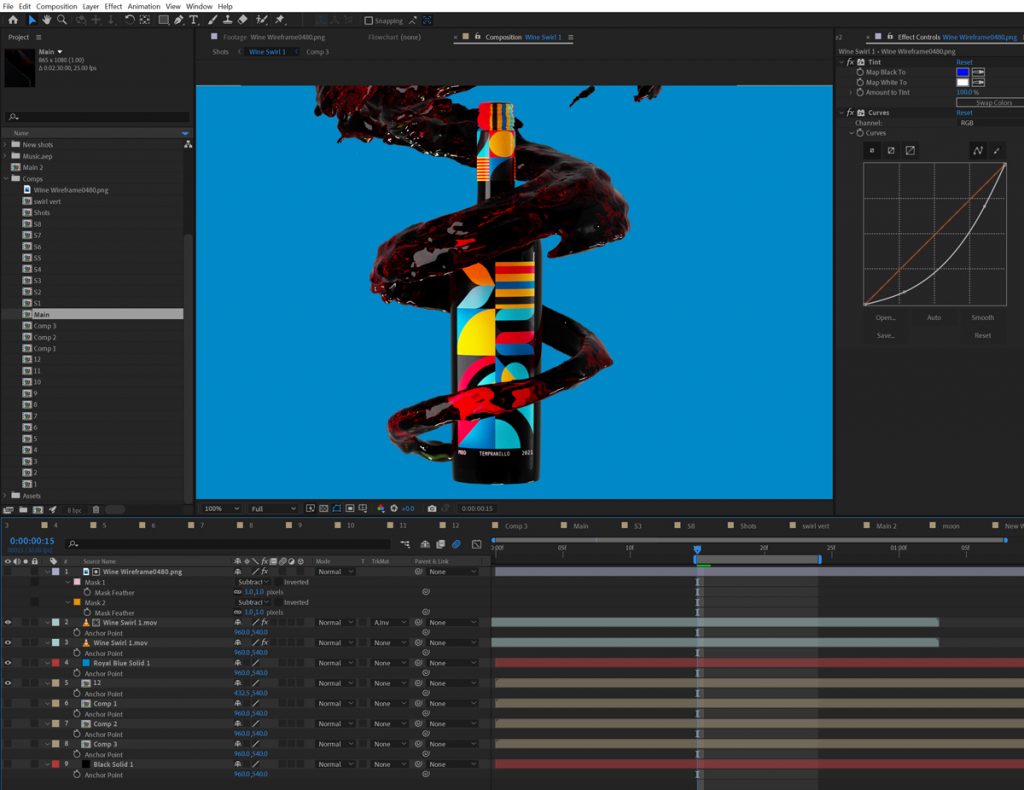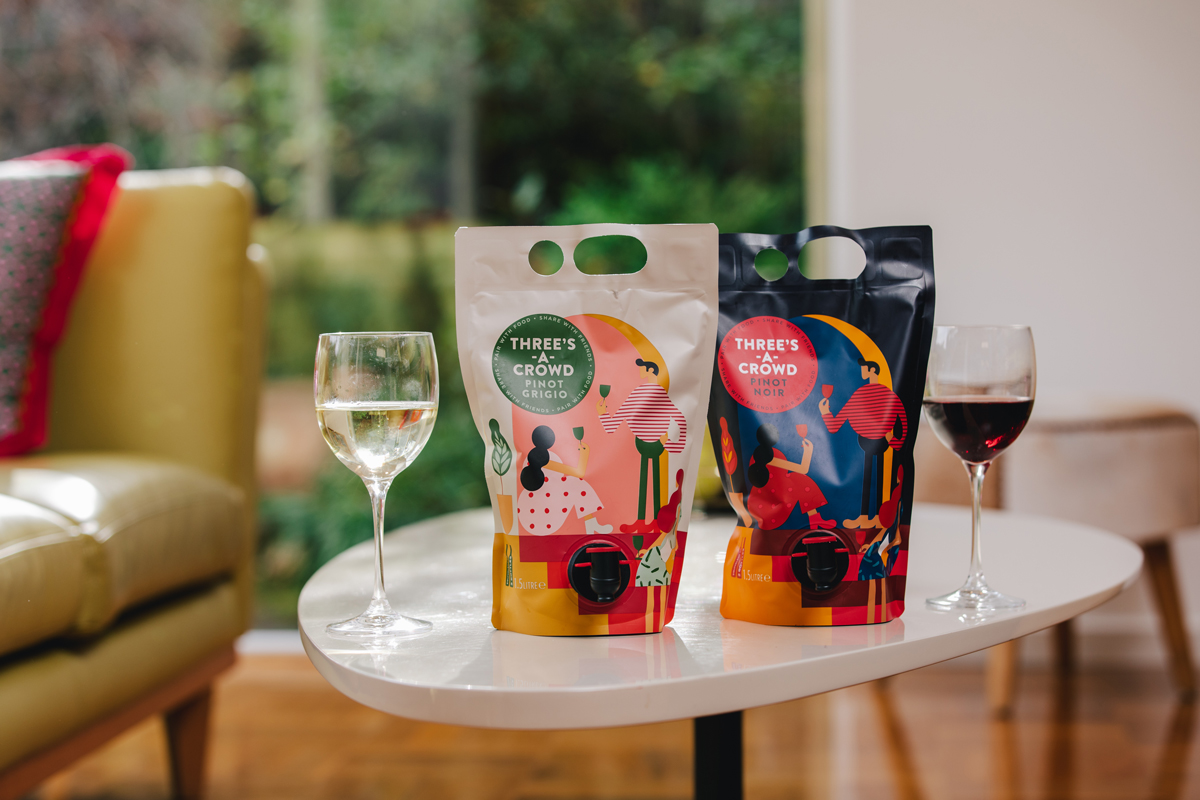Murray Valley’s Trentham Estate has recently innovated its wine packaging in the form of a sustainable pouch capable of containing a magnum’s-worth of wine – 1.5 litres.
Tretham’s ‘Three’s a Crowd’ range – a Pinot Noir and Pinot Grigio – has been released in a sustainable wine pouch that produces 80 per cent less carbon emissions in its lifespan than traditional glass bottles.
Interestingly, the winery’s chief winemaker and managing director, Anthony Murphy, says the wine stored in the pouch stays fresh for weeks once opened, which could aid in the responsible consumption of alcohol.
“In this current climate consumers are looking for more affordable alternatives, however they still want great quality wine and Three’s a Crowd offers that,” said Trentham Estate chief winemaker and managing director Anthony Murphy.
“It’s made from triple-metalized and thin polyethylene film. This typically is the same material used for wine bag-in-box packaging.
“The film protects the wine from oxidation and UV damage, and as such, it guarantees a long shelf-life and once opened freshness is retained. Our studies have shown that the package gives excellent results on aging potential.”
The materials have been sourced from Asia and Murphy says that while the materials are fully recyclable in Europe, he hopes that the technology to do so will make its way to Australian shores soon.
Murphy says one of the main reasons Trentham Estate embarked on this project was the 80% less carbon emissions factor in the manufacturing and transportation.
“Another benefit of the pouch is that the packaging offers virtually zero waste compared to bottled wines which becomes unattractive after a few days,” said Murphy.
“The convenience of the pouch is another obvious benefit, it’s great for outdoors and on-the-go occasions, like camping, caravanning and picnics.”
So far, consumers are reacting positively to this form of packaging, which could spur the progression of more wineries adopting more alternative packaging formats like this.
“Consumer feedback has been exceptional, with people excited about the convenience and longevity of the products with the added benefit of lower carbon emissions,” said Murphy.
“It’s a new concept for Australia, it’s been in Europe for many years but for Australians it is a new idea.
“The packaging is eye-catching, and we’ve had a lot of great feedback on that too. People are finding the product fun and user-friendly.”
Murphy said that alternative packaging formats have their place in the market, much like traditional bottles.
“Bottles and pouches both have their place in the market. The pouch adds to the convenience of single serve drinking and is an ideal wine for people on-the-go and more casual dining,” said Murphy.

Dom Legg from Motion By Design
Label animation
Meantime, an innovative and potentially cost-effective solution to promote wine has been developed by an Adelaide-based animation company.
Motion By Design Founder Dom Legg says his company uses animation to bypass the limitations of the traditional filming and photography process to create “scenes with products that are either not possible in real life, or would simply be too expensive to set up and film”.
Videos utilising animation can be used to boost advertising campaigns for broadcast and social media ads, as well as on online stores, as a more engaging and unconventional alternative to still imagery.
Legg says the eye-catching format provides the flexibility to quickly edit visuals to swap out labels, bottle types and animation styles, allowing for a fast and efficient turnaround on content. This process uses 2D and 3D animation in conjunction with video assets to revolutionise the way wineries connect with audiences.
“Video is a great way for a company to stand out on social media,” says Legg. “It’s also the best way to tell a brand story and captivate an audience in a short time. We often use an interview with a winemaker, or a short 10-30 second clip that tells a small story that customers engage with. It’s the entire cellar-door experience, wrapped up in a small video.”
He notes his clients have had great success with the format: “We use video-based adverts for many of our ecommerce brands, as it simply converts better than still-image based creative”.
The timing of this development is opportune – given the uncertainty surrounding the pandemic, many customers are reluctant to partake in cellar door tastings.
“The alcohol market, particularly wine, is an industry that relies heavily on wholesale and cellar door sales,” says Legg.
While wine sales have been increasingly moving online over recent years, Legg observes that, “COVID has really pushed the timeline up for most companies”.
This has meant that online competition in this space has increased, and the need for high-quality promotional output has, in turn, also increased. Legg said his company saw this as an opportunity for wine brands to pivot their approach and move some of the cellar door benefits to an online format, driving sales and enhancing the ecommerce store experience.
Legg discovered that while standard product images and videos may go some of the way towards driving sales, they also come with significant limitations. His company started out with wine bottle video alone, but soon realised that no wine bottle is made perfectly.
“Once we put a bottle on a lazy Susan, the imperfections became distractingly obvious. And so the animated wine bottle concept was born, and grew from there,” he said.
The animated solutions that Motion By Design deliver allow wine brands to showcase their products in a more unique and compelling way than traditional video formats. Furthermore, their solutions are optimised for online delivery, allowing flexibility for brands and helping to pique interest, drive traffic, and increase sales.
Examples of Motion By Design’s animation work can be viewed online: www.motionbydesign.com.au

The 3D wireframe element being composited in After Effects with a 3D fluid simulation for Wine By Design’s label animation work. The elements are separated for full-control of colours, shading and edits
.
This post was originally featured in the October 2021 issue of the Grapegrower & Winemaker magazine.
To read more articles like this, subscribe online here.





















